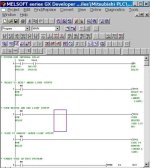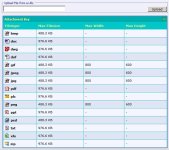ActuallyJMH
Member
<LI class=title>Hi, I am New!<LI class=group_icon>

I've been working on a college assignment for instrumentation engineering and have been given a design task. I've been going through it but I don't really understand designing programs, in this case ladder logic. Any assistance would be brilliant and any additional general help on PLC Programming would be appreciated, as I really enjoy PLC topics but seem to struggle.
Heres the problem given:
There is an industrial oven on your site used for heating bearings for motors in the repair workshop and the bearings are heated up to a normal temperature of 80 degrees celcius.. Lately electricians in the repair shop have been asking for local indication of the process.
1) When the beaing is placed in the oven and a door switch is made as the oven door is closed the light should indicate amber for 5 seconds.
2) After the 5 seconds the oven automatically heats up and the red light comes on for 30 seconds indicating a bearing is being heated up.
3) After 30 seconds the oven is switched off and the bearing is allowed to cool inside the oven with an amber light on for 10 seconds.
4) This is replaced with a green light for a further 15 seconds and then the green light goes off meaning the bearing can be removed safely and retaining enough heat to place on to the motor shaft.
5) Try to incorporate any safety interlocking with the door switch and alarm conditions to enhance your program.
Ive got as far as point 2, using a retentetive timer in step 1. As I said earlier any assistance would be appreciated and any explanations to help me better understand PLC's/Design.
Thanks in advance, JM

- Group:MrPLC Member
- Posts:3
- Joined:22-January 13
- Country:United Kingdom

I've been working on a college assignment for instrumentation engineering and have been given a design task. I've been going through it but I don't really understand designing programs, in this case ladder logic. Any assistance would be brilliant and any additional general help on PLC Programming would be appreciated, as I really enjoy PLC topics but seem to struggle.
Heres the problem given:
There is an industrial oven on your site used for heating bearings for motors in the repair workshop and the bearings are heated up to a normal temperature of 80 degrees celcius.. Lately electricians in the repair shop have been asking for local indication of the process.
1) When the beaing is placed in the oven and a door switch is made as the oven door is closed the light should indicate amber for 5 seconds.
2) After the 5 seconds the oven automatically heats up and the red light comes on for 30 seconds indicating a bearing is being heated up.
3) After 30 seconds the oven is switched off and the bearing is allowed to cool inside the oven with an amber light on for 10 seconds.
4) This is replaced with a green light for a further 15 seconds and then the green light goes off meaning the bearing can be removed safely and retaining enough heat to place on to the motor shaft.
5) Try to incorporate any safety interlocking with the door switch and alarm conditions to enhance your program.
Ive got as far as point 2, using a retentetive timer in step 1. As I said earlier any assistance would be appreciated and any explanations to help me better understand PLC's/Design.
Thanks in advance, JM






